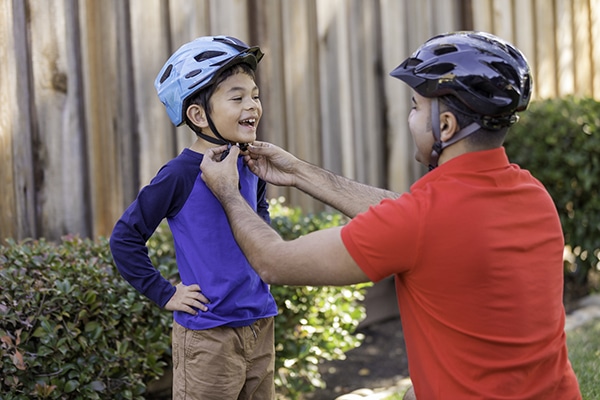
As the weather begins to improve and the spring days become longer, a lot of families will start pulling out their bicycles from the garage. However, when you pull the bikes out, it is important that you remember to always wear a bike helmet.
A bike helmet can save your life and is just as important as wearing a seatbelt. The effects of even a minor traumatic brain injury can be debilitating and last for years. Head injuries account for almost three fourths of bicycle deaths that occur annually in the United States and according to the bicycle helmet safety institute, helmets completely prevent or reduce the severity of brain injury in two thirds of cases.
Reasons to wear a bike helmet
- Protects your head, face and brain from trauma by allowing the helmet to absorb the force of a fall or crash.
- Improves your ability to see. A helmet visor can shade your face from the sun and prevent rain or snow from getting in your eyes.
- Improves your visibility. A brightly colored helmet or a helmet with reflective strips can make you more visible to drivers.
- Wearing a bike helmet sets a good example for others. In 21 states, youth riders are required by law to wear helmets.
- It protects your legal rights. Insurance companies will often claim in court that a bicyclist who was not wearing a helmet was negligent, thus arguing against paying medical bills and damages.
It is important to make sure that a helmet is the right fit for children. Key factors include:
- Size: use a measuring tape to measure your child’s head. Start in the middle of the head and make sure it is tight all the way around.
- Position: place helmet on child’s head and make sure it is two fingertips above the eyebrow.
- Side straps: adjust the straps so that they form a “V” shape under and in front of the ears.
- Chin strap: buckle the chin strap and tighten the strap so that no more than two fingers fit under the chin.
Helmet safety tips
- Dress appropriately – always wear a properly fitting bike helmet.
- Check your bike – make sure your bike is safe to ride.
- Know the rules – follow the same rules as cars and other vehicles.









